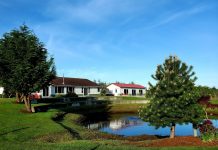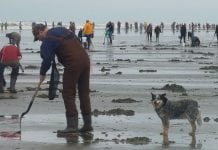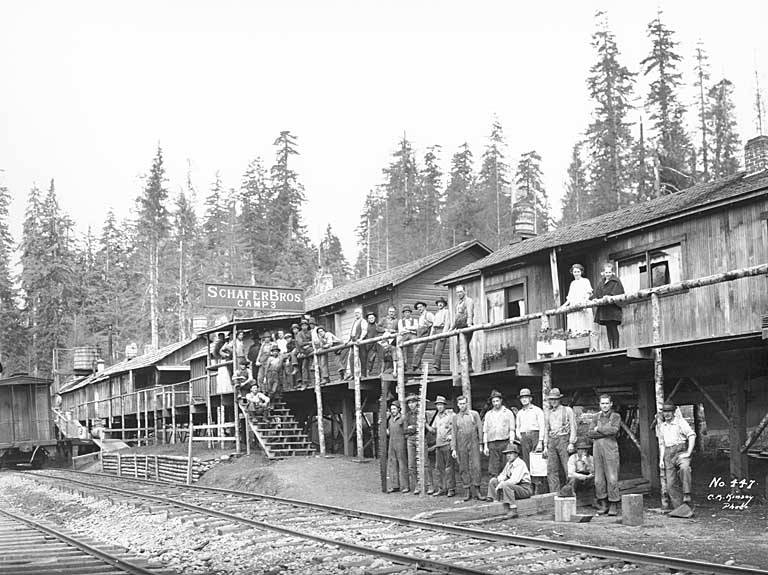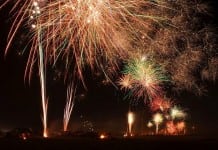At its height the Schafer Brothers Logging Company ran one of the largest logging, milling and shipping operations in the Pacific Northwest. The company operated a network of dozens of logging camps, a railway network of over 100 miles of track, 18 locomotives, 325 logging cars, 70 donkey engines, 5 mills and a fleet of tugs and cargo ships. Its 3,000 workers hailed from across the world.
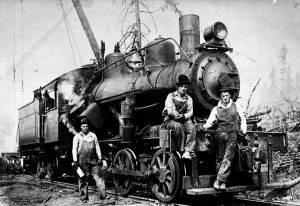
The Grays Harbor-based logging company was founded by the Schafer family. This family arrived in Olympia in 1871, seeking a new home. John D. and Anna (Bollebeck) Schafer brought their large family to a spot along the Satsop River. They chose a homestead site six miles from the head of the Satsop River where they established a homestead claim and started farming.
In 1893, young brothers John, Herbert and Albert convinced their parents to allow them to log the family’s property. They agreed and the brothers hired an experienced logger to teach them the trade. Once they had logged out their property, their neighbors hired them to clear their land as well.
The Schafer Brothers Logging Company was officially incorporated in 1913 with a capital of $300,000 under the leadership of John, Herbert and Albert Schafer. The business grew from a team of 20 loggers using bull teams. As technology changed the company acquired steam donkey engines and later trucks. The company floated logs down the Satsop and Chehalis Rivers at high water to their mills in Montesano and later to Aberdeen. Logs were later moved by truck.
The company grew during World War I. They hired enlisted soldiers as loggers in the Spruce Division. Most of these soldiers worked at Camp Five, near the southwest corner of the Mason County border along what is now the Brady-Matlock road, near Schafer State Park.
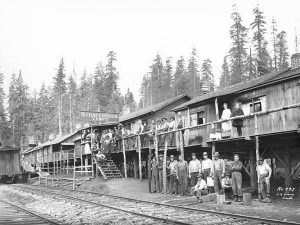
The 1920s saw a period of expansion for the company. However, the Great Depression proved a massive blow to the timber industry. But the company weathered the storm, with demand increasing during World War II. Later, one of the company’s ships, the Maurine—named for Albert’s daughter—gained fame when it appeared in the 1955 film “Sea Chase,” starring John Wayne and Lana Turner. It had worked the Chehalis River for many years.
The company’s employees came from many places. A number of the original workers were members of the Satsop Tribe. The company operated a network of logging camps, more than 500 over time. While the first team of loggers had lived in simple bunkhouses with an open fire and hole in the roof for smoke, some later logging camps were like small towns with shops, family cabins and bunkhouses. Other logging camps were more temporary, with structures built on supports so that they could be quickly moved by rail or truck to the next logging site. While most of the early loggers were single, families were living in the logging camps by the 1920s.
In 1955 the Schafers sold their company to Simpson Timber Company, ending the company’s over half century of operations.
The Schafer Legacy
The impact of the Schafer family and their logging company continues to impact Grays Harbor County today. This includes Schafer State Park. Located three miles upriver from the original Schafer homestead, the family had enjoyed picnicking and fishing in the area over the years. The Schafer brothers offered the land to the City of Montesano in honor of their parents. In response, the city accepted the generous gift and opened the park in 1922 but soon decided that it could be better administrated by the new State Parks system. The Schafers signed over the land to the state in 1924. This transaction marked the first time that anyone connected to timber interests had donated land to state parks.
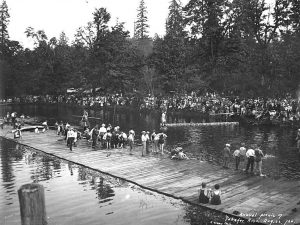
Schafer State Park quickly proved a popular spot for picnicking and outdoor recreation. The Schafer Bros. Employees’ Association held annual picnics in the park for workers and their families, often attracting over 6,000 people. These annual picnics included races and contests, including timber themed events like high climbing, log rolling, log bucking, shingle packing and log inspecting. There was even an award for the bald man with the shiniest head!
The Schafer company picnics continued even through the Great Depression and ended when the business was sold in 1955. Video of the 1926 picnic is available on YouTube. The company also produced film footage of their work in “A Story of West Coast Lumber” and “Harbor Plywood.”
During the Great Depression, the Federal Emergency Relief Administration (FERA) and Works Progress Administration (WPA) improved Schafer State Park facilities and infrastructure. The park, having grown to 119 acres, offers swimming, hiking, wildlife viewing and camping.
Historic Schafer logging artifacts are on display at the Chehalis Valley Historical Museum in Montesano. Part of these came from a now-closed museum run by Carl Schafer on the former Schafer Game farm. Traces of the company’s trestles, rails and logging docks are also visible in the area. The Schafer family and their company certainly should be remembered. They played an important role in the history of Grays Harbor County and its people.















